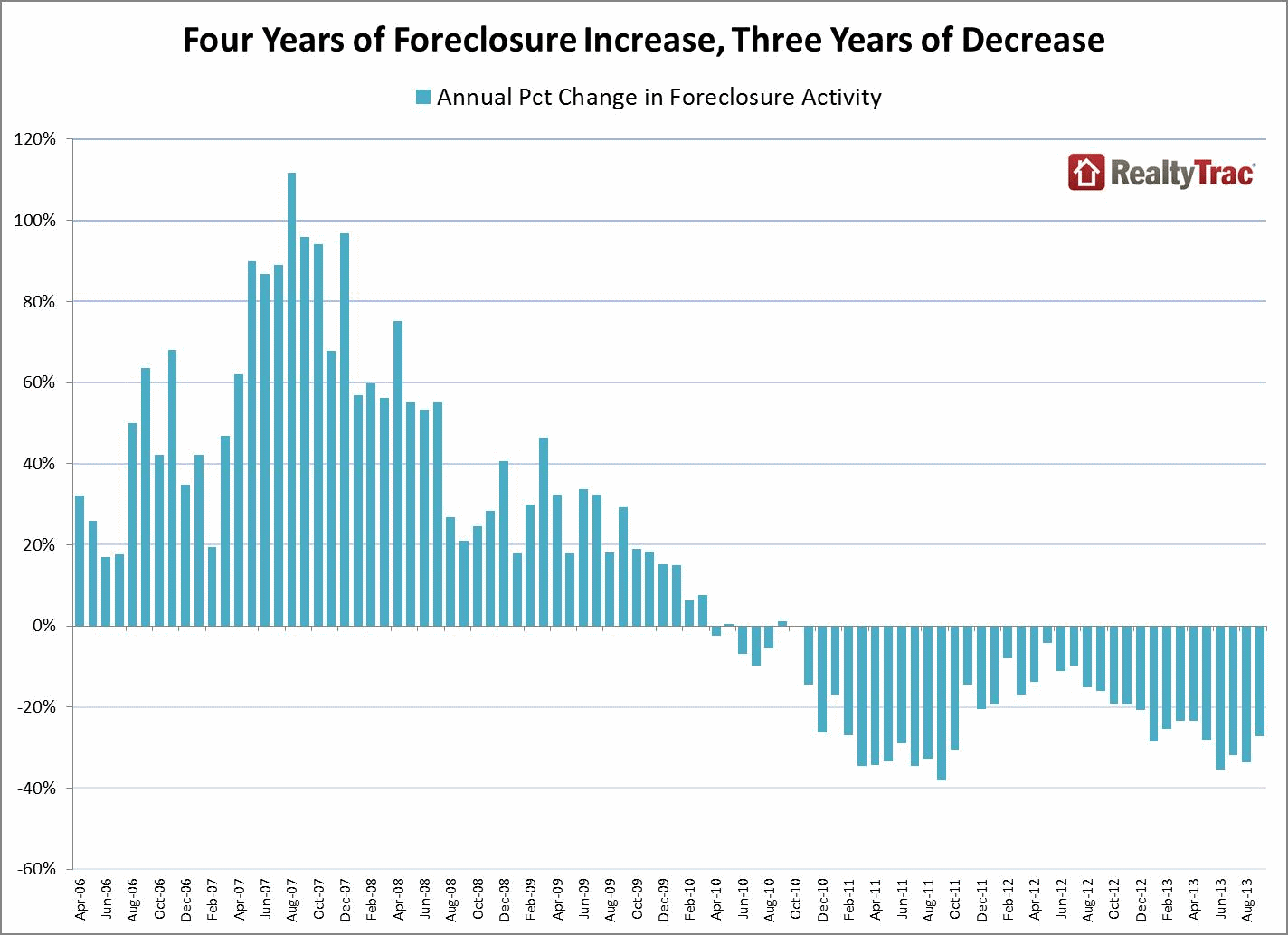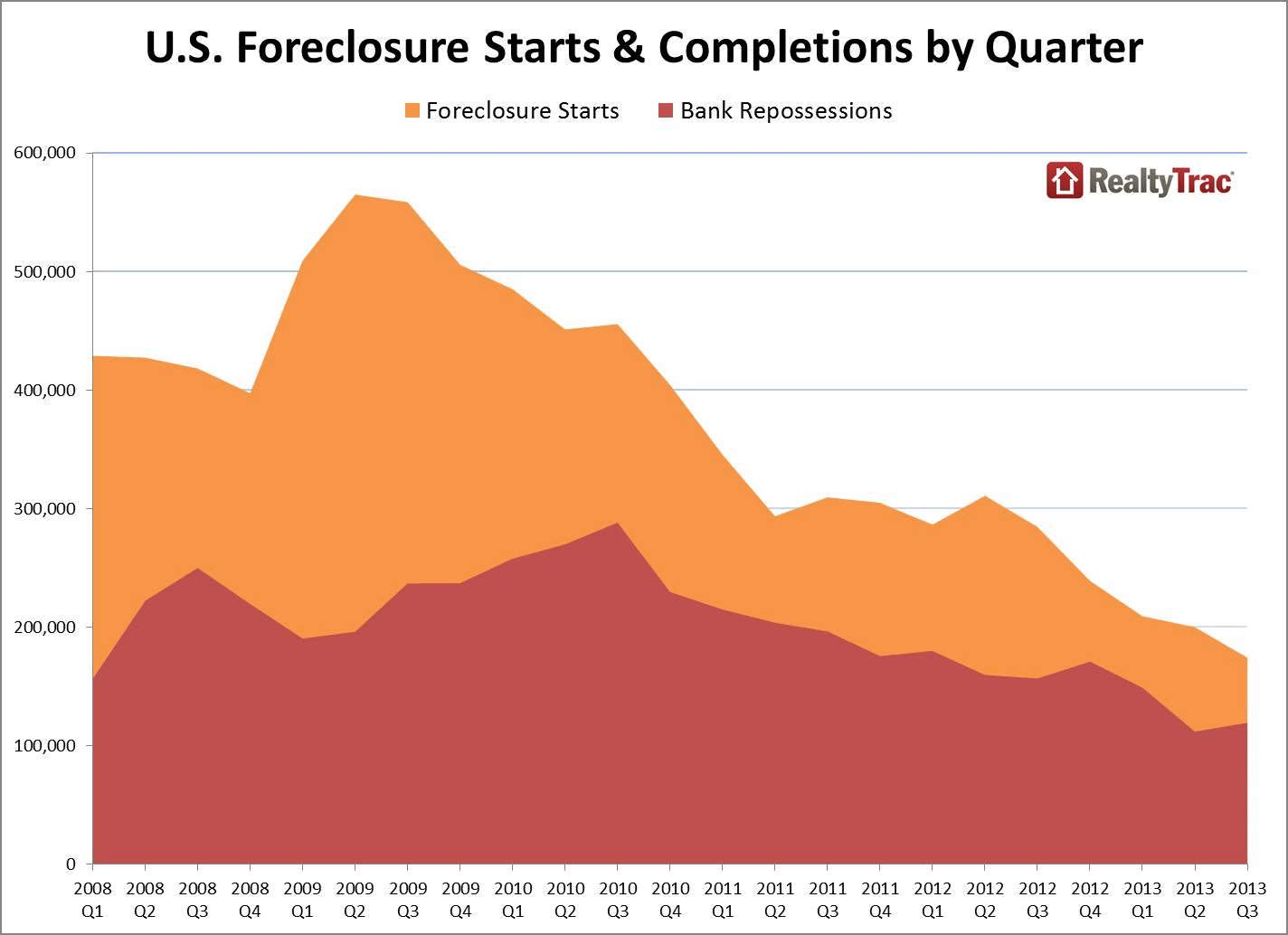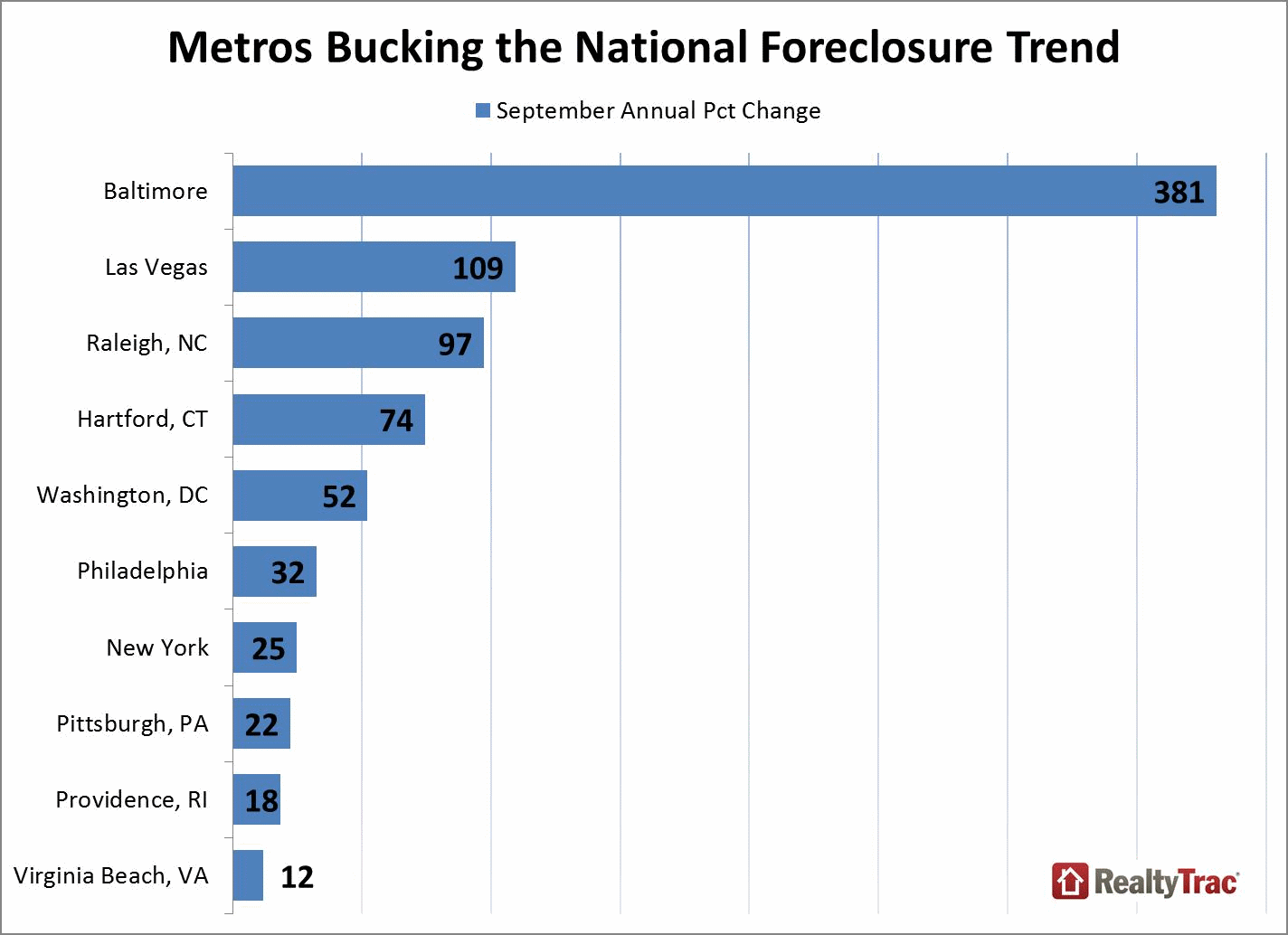Foreclosure activity in September was up 2 percent from August, RealtyTrac said today, but the third quarter saw the lowest level of foreclosure related filings since the financial crisis began. The company's U.S. Foreclosure Market ReportTM covering the two periods showed 131,232 filings in September including default notices, scheduled auctions, and bank repossessions or completed foreclosures compared to 128,560 in August, but down 27 percent from a year before.
RealtyTrac said September was the 36th consecutive month that filings decreased on an annual basis, a decline that began with the robo-signing revelations in October 2010. At that time there was a near nationwide moratorium on foreclosures after lenders and servicers were accused of improperly signing off on legal documents.

Third quarter activity was the lowest since the second quarter of 2007 with 376,931 filings, down 7 percent from the second quarter and 29 percent from the same quarter in 2012. One in every 348 housings units was the subject of a filing during the quarter.
The foreclosure process was begun on 174,366 properties in the third quarter, a seven year low, 13 percent and 39 percent fewer than in the previous quarter and the previous year respectively and the lowest level since the second quarter of 2006. Bank repossessions (REO) increased 7 percent for the quarter with 119,485 properties taken by lenders but this number represented a 24 percent year-over-year drop.

"The September and third quarter foreclosure numbers show a housing market that is haltingly returning to health," said Daren Blomquist, vice president at RealtyTrac. "In a healthy housing market foreclosures are rare but streamlined while still protecting the rights of the homeowner. While foreclosures are clearly becoming fewer and farther between in most markets, the increasing time it takes to foreclose is holding back a more robust and sustainable recovery.
As has been noted in previous reports there some states that continue to go against the national flow in foreclosure activity and to do so dramatically. While foreclosure starts decreased year-over-year in the third quarter in 38 states and included substantial decreases in many including Colorado (-71 percent), Arizona (-63 percent), California (-59 percent), Illinois (-56 percent), and Florida (-52 percent) there were 11 states in which starts rose. They skyrocketed in Maryland (+259 percent), and Oregon (+252) and rose more than 50 percent in New Jersey and Connecticut. Likewise REO's increased in 26 states, notably New York (+65 percent), New Jersey (+64 percent), and Illinois (+44 percent).
For September overall activity was up in 16 states compared to the previous year, notably Maryland (+230 percent), Nevada (+97 percent) and Connecticut (+69 percent) and in 64 metropolitan areas, especially Baltimore (+381 percent) and Las Vegas (+109 percent).

"The sharp jumps in foreclosure activity in some local markets may come as a surprise to some," Blomquist said. "These spikes in activity demonstrate that while millions of distressed homeowners have been pulled back from the precipice by foreclosure prevention programs over the past several years, once those programs expire or are exhausted, a percentage of these troubled homeowners are still susceptible to falling into foreclosure. In addition even slight economic downturns at the local or regional level can push these homeowners hanging on by a thread over the edge."
Florida continued to lead the nation in overall foreclosure activity but filings in the third quarter were down 8 percent from a year earlier. One in every 126 housing units received a filing during the period, more than twice the national average. Long-suffering Nevada was a close second with a rate of one in 128 housing units. Filings increased 10 percent from Q2 and 21 percent from a year earlier. Maryland, up 180 percent in foreclosure activity over the year before, was third highest among the states with one in every 204 housing units the subject of a filing during the quarter. Illinois and Ohio rounded out the top five states.
U.S. properties foreclosed in the third quarter of 2013 were in the foreclosure process an average of 551 days, up 5 percent from 526 days in the second quarter and up 44 percent from 382 days in the third quarter of 2012. New York and New Jersey continued to have the most protracted timelines, 1,037 days and 1,014 days respectively. Florida (929 days), Illinois (828 days) and Connecticut (693 days) also substantially exceeded the national average. The shortest time to foreclose was in Maine, 160 days, followed by Texas, Alabama, and Virginia, all with averages under 190 days.







